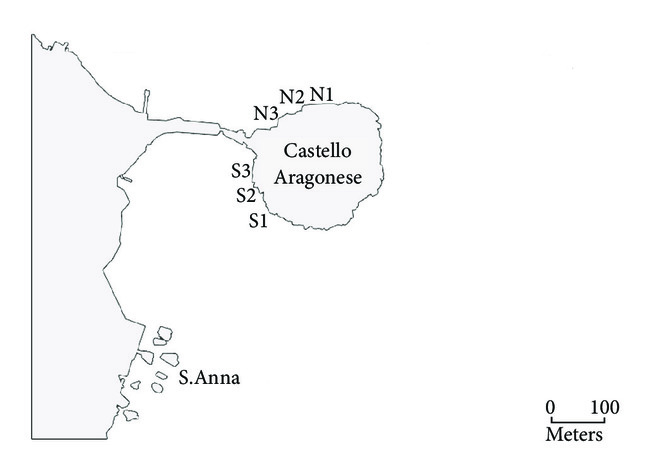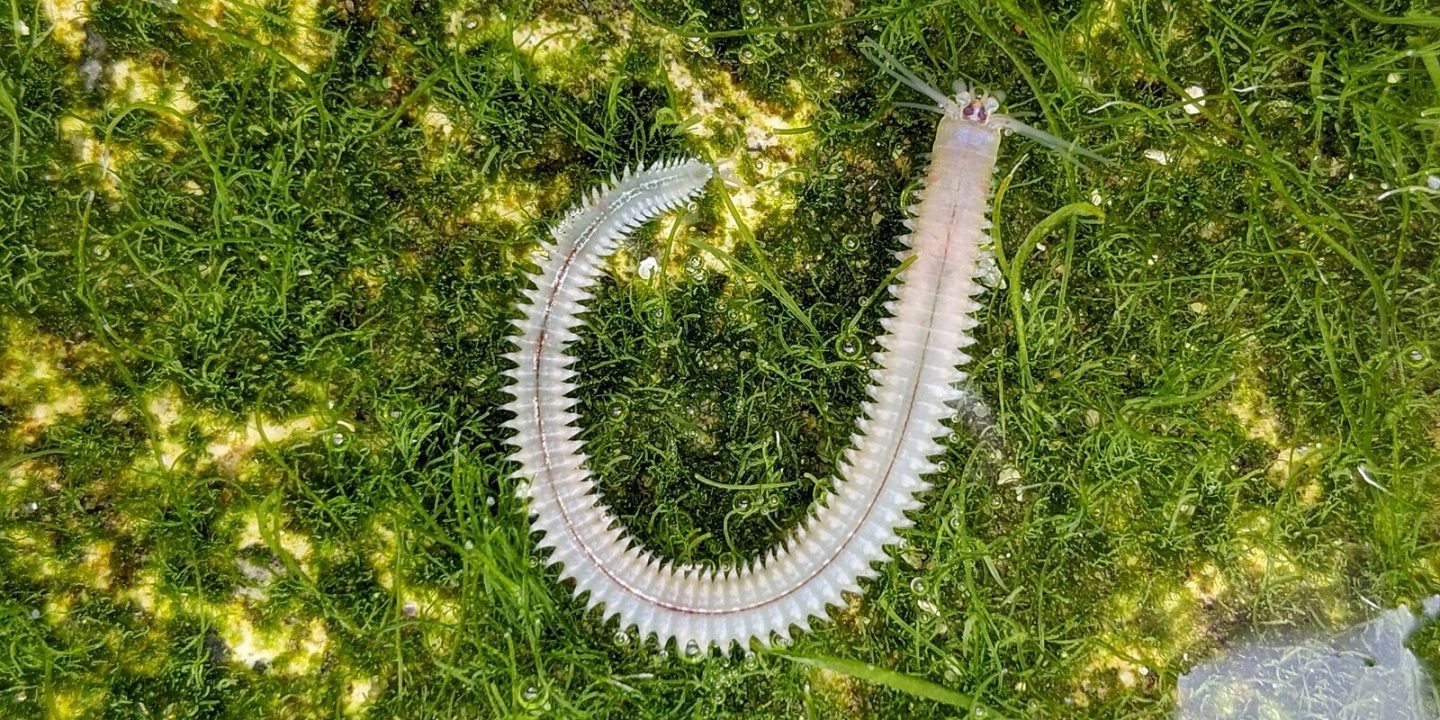As we open the door on day 20, we look at a species in the Invertomics study category in the wild, and highlight a study from 2019 that places Platynereis in a modern context, to assess its capability to act as a model organism for studies of ocean acidification, Antioxidant Efficiency of Platynereis spp. (Annelida, Nereididae) under Different pH Conditions at a CO2 Vent System.
Every year, the National Oceanic and Atmospheric Administration (NOAA) reports that the quantities of carbon dioxide continue to increase and reach new heights. When the amount of carbon dioxide in the atmosphere rises, the concentration of carbon dioxide that sinks into the ocean also rises. As a result of the reaction between the dissolved carbon dioxide and the water molecules (H2O), carbonic acid (H2CO3) is formed. This acid has breaks down into a hydrogen ion (H2+) and bicarbonate (HCO3). As more hydrogen ions are released, the seawater becomes more acidic, which in turn causes the pH to fall. This drop in pH is called ocean acidification.
Ocean acidification has several negative consequences on marine life, one of which is that it disrupts the availability of carbonate ions, which are necessary for the construction and maintenance of calcium carbonate shells and skeletons in mollusks. Furthermore, there are some studies demonstrating that the increased levels of carbon dioxide in the ocean that are caused by the acidification process might eventually result in an increase in the generation of reactive oxygen species (ROS) in some marine animals. These are a category of molecules and free radicals that include superoxide anions, hydrogen peroxide, hydroxyl radicals, and more. Specifically, these are produced as natural byproducts of cellular metabolism, such as in activities that include oxygen like respiration. Furthermore, oxidative stress may be caused by excessive and unregulated synthesis of reactive oxygen species (ROS), even though ROS play vital roles in a variety of physiological activities, including cell communication and defense against pathogens. When there is a disruption in the equilibrium between the formation of reactive oxygen species (ROS) and the antioxidant defense systems of the cell, oxidative stress develops. This imbalance may lead to possible damage to DNA, proteins, and lipids.
According to Bellan et al (1988), the polychaete Platynereis dumerilii showed high tolerance to environmental stress, so it was used as a model organism for transplant experiments to investigate the effects of OA, but the basal efficiency of the antioxidant defence systems of Platynereis dumerilii in terms of sensitivity and population seasonality in naturally acidifed and normal pH conditions was never evaluated. An investigation on the impact that OA has on the oxidative sensitivity of the Platynereis dumerilii population was carried out specifically for the purpose of this study.

Samples were collected from 3 different pH zones on the island of Ischia, Castello Aragonese (Gulf of Naples, Italy), which is well-known for the presence of numerous submarine CO2 vent systems. The control area had a normal pH and no venting activity (N1 and S1), the intermediate area had moderate vent activity with low pH conditions (N2 and S2), and the high venting activity area was characterized by extremely low pH conditions (N3 and S3). Also, Sant’Anna is another control site that is distinguished by a pH value that is very consistent. This allowed the researchers to examine the total oxyradical scavenging capability (TOSC) as well as the antioxidant enzyme activities in areas with high seasonal pH variability.

The results revealed that there were only little differences in both antioxidant enzyme activity and total oxyradical scavenging capacity across the populations. This could be interpreted as a possible adaptation to the seasonal changes that occur in their environments, especially in glutathione reductase activity (one of the antioxidant enzymes) and the total oxyradical capability to counteract the HOONO radical, as they exhibited similar trends in both populations (control and venting population), with the vent population showing more stability throughout the year. Moreover, there was no clear correlation between pH conditions and oxidative status alteration.
In conclusion, according to this study, natural pH conditions do not have a big effect on antioxidant efficiency in Platynereis. This shows that Platynereis spp. can handle changes in pH well and that they can adapt to low pH environments with only minor seasonal changes in their antioxidant defense systems; enzyme activity and TOSC remained consistent year-round. Therefore, these marine worms may not be much affected by long-term exposure to moderately increased pCO2 levels, which can be expected to occur in the future due to climate change.
(Featured image: Platynereis bicaniculata, via wikimedia commons author velodrome)
![]()
